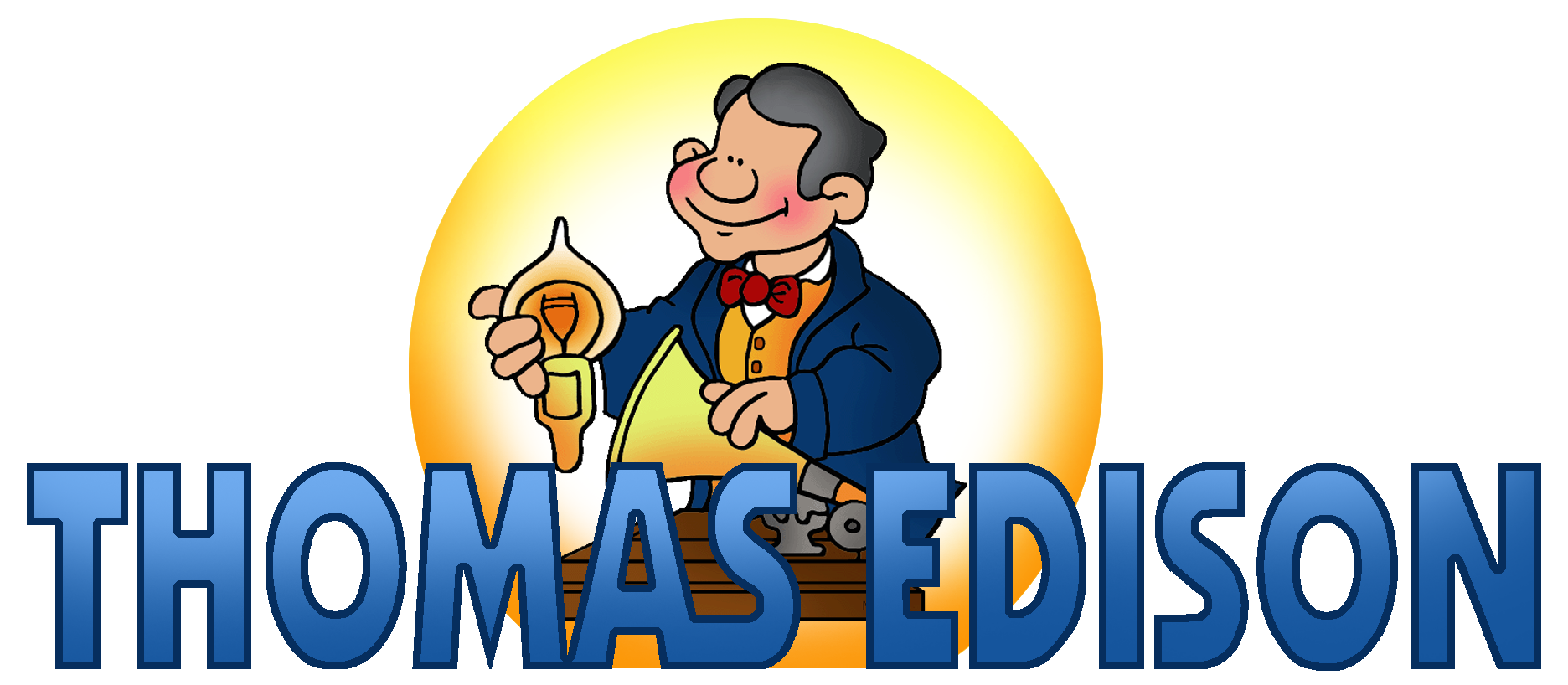When I was a kid, I used to think that
Thomas Edison was born in Edison, Ohio. Well, it kind of makes
sense. But, the American inventor was born in Milan, Ohio, near
Lake Erie and Sandusky, in 1847. The little village of Gilead
Station, and later Levering, changed its name to honor Thomas Edison in
1881. It didn't actually help the village grow all that
much. In 2023, the population of Edison was 441.
When Thomas was seven, too young to know
any better, his family moved to Port Huron, "X"ichigan. He started
school there, a little late due to illness, and lasted for three months
in the public school. He was kicked out because he couldn't (or
wouldn't) pay attention to the teacher. The task fell upon his
mother to nurture and teach the last of her seven children. As she
taught him to read and write, she must have done a good job to motivate
him! Tommy developed a love of reading. He read books,
fascinated by technology as well as new inventions, and taught
himself. He enjoyed experimenting and creating during this time.
When Edison was just twelve, he had
scarlet fever. The disease left him deaf in his left ear and with
an 80% loss in the right ear. Some people might have been tempted
to give up, but not our hero from Ohio (and "X"ichigan). He
believed this helped him concentrate on his work. The next year,
he sold candy, newspapers and vegetables on a train in order to earn the
needed cash to buy the equipment he wanted for his electrical and
chemical experiments.
His work along the railroad changed his
life the day he saved a young boy from being hit by a runaway
train. The grateful father gave Edison a job as a telegraph
operator on the Grand Trunk (not Funk, if you know your oldies music)
Railway. By 16, our hero created his first invention. It was
an automatic repeater, a device that helped to send messages more
quickly over telegraph lines.
Edison's first marriage, at 24 in 1871,
was to Mary Stillwell who was 16-years old at the time. They had
three children during their 13-year marriage -- Marion Estelle
(called Dot), Tommy Jr. (called Dash), and William Leslie (called
anything but Leslie, I hope). Mary Stillwell Edison died when she
was just 29.
Two years later, when Edison was 39, he
married for the second time. The second bride, Mina Miller, was 19
on her wedding day. They also had three children -- Madeleine,
Charles, and Theodore. (Charles eventually took over his father's
company when Thomas died and then later was elected to be the governor
of New Jersey.) Edison built a home for his second wife in West
Orange, New Jersey. It was called "Glenmont". The couple
liked to spend winters in Fort Myers, Florida. But, it didn't
matter where Edison found himself. He tinkered with his
inventions whether he was up north or down south. While in
Florida, Edison became friends with Henry Ford and Harvey
Firestone. It made since that his interests in Florida
focused on rubber, so important in the automobile and tire
industries.
Edison moved around a bit before finally
deciding where he really wanted to live. In 1868, I lived in
Boston, Massachusetts, where he worked as a telegraph operator.
Later, in 1869, he moved to New York City for a job fixing machines at a
company. This gave him time in the evening to work on his own
projects. Finally, in 1876, Edison used the money from his
inventions to create his own laboratory in Menlo Park, New Jersey.
It was the first business with the sole purpose of inventing. The
inventors who worked with Edison took their research and science skills
and applied them to practical uses that could be manufactured on a large
scale. Menlo Park was so successful that the laboratory expanded
to cover two city blocks in ten years.
Over the course of his life, Thomas
Edison may have been the greatest inventor in history. Over 1,000
patents are registered in his name. They changed history for
people back in the 1800s and continue on to today. He used his
inventions to form General Electric, which ranked as the 33rd largest
firm in the United States in 2020.
Among his three most famous inventions
were the phonograph (which made it possible to record and play back
sound), the practical light bulb (not the original bulb, but he made one
that lasted longer), and the motion picture (which was great for all of
us who enjoy a good movie). In addition to these, he invented the
carbon microphone that helped Alexander Graham Bell's telephone.
Among his other inventions were an electric voting machine, the
precursor to the copy machine, the automatic telegraph, and the alkaline
storage battery.
Edison was an active businessman up
until his last years. His achievements led him to receiving the
French Legion of Honor in 1881 and the Congressional Gold Medal in
1928. His curiosity, creativity, and hard work left an example for
future inventors around the world. Thomas Alva Edison died from
complications with diabetes on October 18, 1931.
